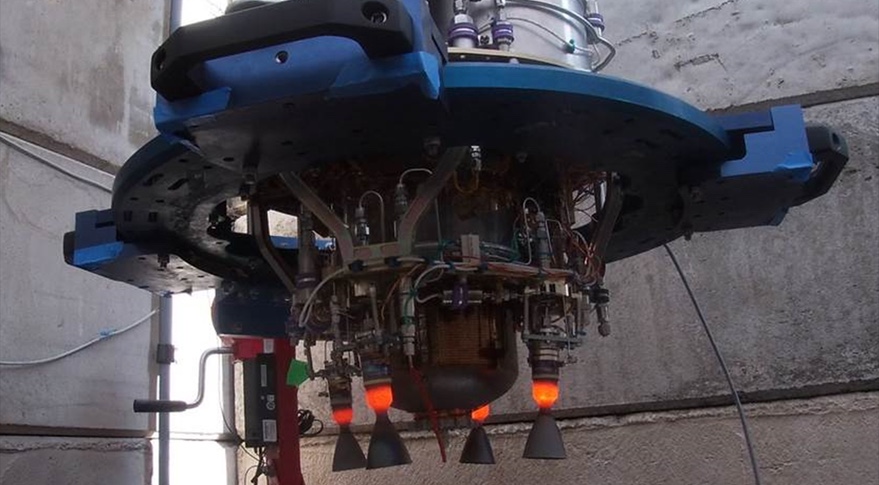WASHINGTON — The first set of green bipropellant thrusters developed by in-space propulsion company Benchmark Space Systems has been installed on a Sherpa tug by Spaceflight for launch in January.
Benchmark announced Dec. 21 that the propulsion system for the Sherpa-LTC tug had been installed and fueled. That tug will fly on the SpaceX Transporter-3 dedicated rideshare mission scheduled to launch in mid-January, placing 13 payloads into multiple orbits.
The system uses Benchmark’s new Halcyon Avant thrusters, which use “green” propellants that are safe to handle. The thrusters provide improved performance over the hydrogen peroxide monopropellant thrusters Benchmark previous developed and flown on several satellites.
“We’re essentially at par with the performance seen on heritage hypergolic systems,” such as those powered by hydrazine and mixed oxides of nitrogen, said Jake Teufert, chief engineer of Benchmark, in an interview. “Not only is it green and the benefits that come with that, but we’re also winning to performance war, so to speak.”
The company declined to disclose the thrust the system produces, but Teufert said the current system has a specific impulse — a measure of propulsion efficiency — of 303 seconds. He said the company envisions increasing that performance to 315–320 seconds, which would make it “best in class” compared to existing systems.
The system uses relatively commonplace propellants: high-test peroxide as the oxidizer and a hydrocarbon fuel. “One of our design objectives with this system was to make it as flexible as possible and as low cost as possible,” said Ryan McDevitt, chief executive of Benchmark. “These are easily acquirable propellants that we’re using, and the magic is on the thruster side.”
“It’s really pushing the state of the art on hydrogen peroxide thruster design,” said Teufert. “We’re bringing essentially 60 years of best practices and upgrading the state of the art to make a modern peroxide thruster. We’ve seen a lot of gains in just incorporating modern technology, manufacturing, and 60 years of general heritage and lessons learned as built up in the industry.”
“Benchmark’s innovative high-thrust system will play an important role in our first multi-destination rideshare mission,” Phil Bracken, vice president of engineering at Spaceflight, said in a statement. “We intentionally designed our Sherpa program to be modular so we could utilize best-of-class propulsion systems to meet our customers’ specific launch needs.”
Spaceflight has a different version of its Sherpa tug, called Sherpa-LTE, that uses an electric propulsion system provided by Apollo Fusion and first flown last June. The Sherpa-LTE is designed to maximize delta-V, or change in velocity, needed for missions to geostationary orbit and beyond, while the Sherpa-LTC provides higher thrust for rapid transfers in low Earth orbit.
Benchmark will be providing a second Halcyon Avant thruster system for another Sherpa-LTC mission launching later next year. McDevitt said his company has seven missions using its thrusters in the pipeline for 2022, with the possibility of that growing to 10 to 15 as new commercial and government customers sign up.
That business has caused Benchmark to double its size this year to 40 employees, both at its Burlington, Vermont, headquarters and a test site in California. McDevitt said he expects the company’s head count to increase by 50% in 2022 as demand for its thrusters grows.
